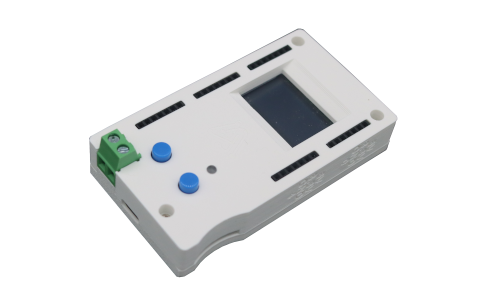Buzzer
Updated: 6/28/2025 Words: 0 words Reading time: 0 minutes
Buzzers convert electrical signals into sound waves, emitting different tones or alarms for signaling, alerts, notifications, and other purposes.
Buzzers have two pins: positive and negative. The positive end is indicated by a '+' sign or a longer pin, and the negative end by a '-' sign or a shorter pin. To increase the volume of the buzzer, you can appropriately increase the supply voltage.
Preparation
| Hardware | Description | Image |
|---|---|---|
| Creative Box Platform |  | |
| Buzzer Module | Official Buzzer Module |
Video Explanation
Buzzer
Connection
Usage
Principles

Types
Common buzzer types include piezoelectric and magnetic.
Piezoelectric
Piezoelectric buzzers utilize the piezoelectric effect of piezoelectric ceramics and pulsed current to vibrate a metal plate and produce sound. The core of these buzzers is the piezoelectric element, which consists of piezoelectric ceramic and a metal plate bonded together.
When alternating current flows through the piezoelectric element, it contracts and expands. This causes vibrations, which generate sound waves.

Magnetic
Magnetic buzzers use an electromagnet to generate a magnetic field, which then vibrates a diaphragm or metal plate to produce sound. They are typically larger and can be used to produce higher volume sounds. They mainly consist of a magnet, a coil, and a vibrating disc (a ferromagnetic disc).
In a magnetic buzzer, current flows through the coil, creating a magnetic field that attracts the vibrating disc. When no current flows through the coil, it returns to its original state. The periodic vibration of the disc produces sound.

Resonant Frequency
Audio components have a specific vibration frequency, known as the resonant frequency. This value depends on the physical parameters of the buzzer. Driving a buzzer with an input signal that matches its resonant frequency will produce the maximum SPL with the minimum input power. Piezoelectric buzzers have higher resonant frequencies (2-6 kHz), while magnetic buzzers have lower resonant frequencies (1-3 kHz). In specifications, resonant frequency is denoted by fo.
Frequency and Sound Pressure Level (SPL)
Audio buzzer datasheets usually include a "Frequency vs. SPL" chart. The SPL value is also referred to as sensitivity. Sensitivity is the sound pressure level (on-axis) in front of the speaker at a given power and specified distance. Buzzers with lower sensitivity typically require higher power amplifiers.
SPL provides a general idea of the approximate volume level an audio can play and the power required to achieve the desired listening level. Sound pressure is typically measured in decibels (dB) or Pascals (Pa).
In the buzzer's Frequency vs. SPL chart, SPL values are shown on the y-axis. There is a direct relationship between this parameter and the voltage driving the buzzer. Higher voltage results in higher SPL values. Frequency response (Hz) is shown on the x-axis.
As seen in the figure below, piezoelectric buzzers have many peaks in amplitude, while electromagnetic buzzers have a smoother curve.


 Sensor Sparks
Sensor Sparks